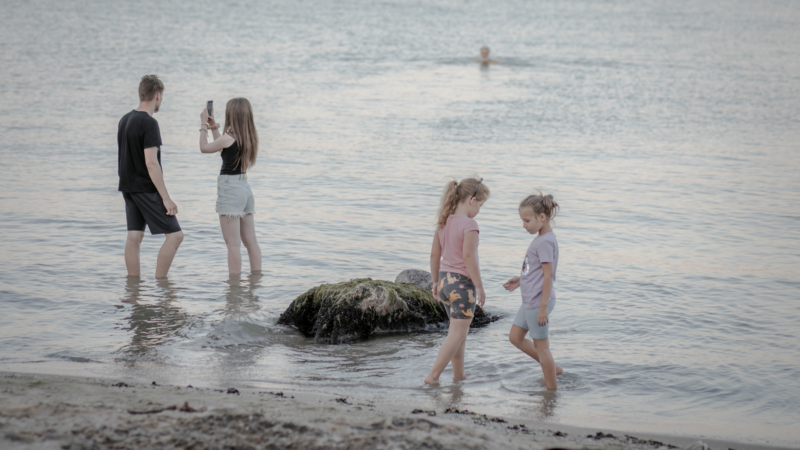Sun, sea and sirens: A summer in Odesa
Two years into a war that has ravaged Ukraine, Odesa, a coastal jewel on the Black Sea, presents an intriguing paradox.
Known historically for its vibrant, unique identity, it has always seemed distinct from the rest of Ukraine. Yet, in these tumultuous times, this once Russian-speaking city has wholeheartedly embraced its Ukrainian heart.
During a visit this past summer, the city, despite the ongoing conflict, remained determined to maintain its vibrancy and sense of normalcy.


Odesa is Ukraine’s largest major city that has access to the sea, a fact that has always made it vital, both strategically and culturally. Founded in the late 18th century by Catherine the Great, the city blossomed into a key trading hub with its iconic port and rich, multicultural history.
Over time, Russian, Jewish and Greek influences flowed freely through its streets. For decades, many of its residents felt closer to Moscow than Kyiv, their identity shaped by the Russian Empire. But since the war began in 2022, something profound has shifted. The city’s allegiance is now clear: Odesa stands firmly with Ukraine.

Walking through the city’s streets today, it’s impossible to miss the proliferation of Ukrainian flags fluttering from balconies, draped over statues and even painted on the walls of cafés. These symbols of resistance and unity are everywhere. As Petro, a doorman at one of the city’s high-end hotels, sums it up: “People want to celebrate life. We have to live, even though the war will go on for a long time.”


The city is brimming with life, reclaiming its vibrancy one step at a time. One of the most telling signs of this revival is the reopening of the Potemkin Steps, a symbol that has defined Odesa for generations. These massive, sweeping stairs, immortalized in Sergei Eisenstein’s classic film Battleship Potemkin, had been closed for two years due to their proximity to the port — a strategic point heavily guarded since the invasion. Now, every evening, they’re packed with locals and tourists alike, watching street performers or simply enjoying the breeze. In a way, the reopening of the steps marks the heartbeat of Odesa’s return to life. “We need to forget about the war for a while,” Petro said.


Away from the conflict, the city’s beaches offer a striking contrast. Lined with families, couples and groups of friends, they’re once again filled to the brim, their laughter and the sound of crashing waves almost drowning out the distant echoes of war.
In the city’s center, it’s hard to find a table without a reservation, a stark contrast to this time last year, when the streets and pubs were noticeably quieter.
And at the oceanarium, the controversial dolphin shows, criticized in the past, have been transformed into a platform for patriotism. As part of one particular performance, a dolphin paints a Ukrainian flag, later auctioned off to raise funds for the Ukrainian military. Even the animals, it seems, have joined in the fight for national unity.



Despite the renewal of everyday life, Odesa’s scars remain visible. The Cathedral of the Transfiguration of Our Lord, severely damaged in a Russian missile strike last summer, still stands as a testament to the devastation the city has endured. Yet, even here, life goes on. The cathedral, a UNESCO World Heritage site, is being meticulously rebuilt. Each morning, as the city awakens, Mass is celebrated in the partially restored space. The light streaming through the broken windows as the choir sings creates a hauntingly beautiful atmosphere — one that feels almost sacred, like a city slowly healing its wounds.


The odd juxtaposition of normality and war is everywhere. On the rooftop of a popular restaurant, diners take photos of the city’s skyline as a distant plume of smoke rises on the horizon. A missile has just struck one of the buildings in the port, but nobody flinches. Waiters continue to refill glasses and guests seem more focused on capturing the perfect shot of the panorama than on the signs of war in the distance.

Odesa, in this new phase, appears neither consumed by the war nor untouched by it. It stands at a crossroads, where tradition meets transformation, and where the past still lingers but no longer dictates. The war has changed the city, but it hasn’t erased its identity. Instead, Odesa remains a place where life, however complicated, finds a way to continue.

Catie Dull photo edited and Zach Thompson copy edited this story.
Handsy fans disrupted a World Series game. Here are 5 notable MLB interference cases
Two Yankees fans were ejected from Game 4 of the World Series for trying to pry a ball out of a Dodgers player’s glove. It's a particularly brazen instance of fan interference, but far from the first.
Shortage of IV fluids leads to canceled surgeries
IV fluids used in hospitals remain in short supply, after Hurricane Helene shut down a key North Carolina factory. The closure has hospitals scrambling to stretch supplies and prioritize care.
In ‘A Real Pain,’ Jewish cousins tour Poland, cracking jokes and confronting the past
In this almost perfect little film, Jesse Eisenberg and Kieran Culkin play cousins who reconnect in Poland to honor the memory of their grandmother, a Holocaust survivor.
Spain flooding: Photos show the devastation in Valencia
Authorities in the region report at least 70 people have been killed after torrential rain overpowered the area.
Supreme Court allows Virginia to purge individuals from voter rolls
The court's order comes less than a week before the 2024 general election.
988 crisis hotline counselors are sometimes targeted by sexually abusive callers
The 988 Suicide & Crisis Lifeline is now operational nationwide. Some of the phone counselors say they need help dealing with abusive callers who keep them on the line and sexually harass them.








